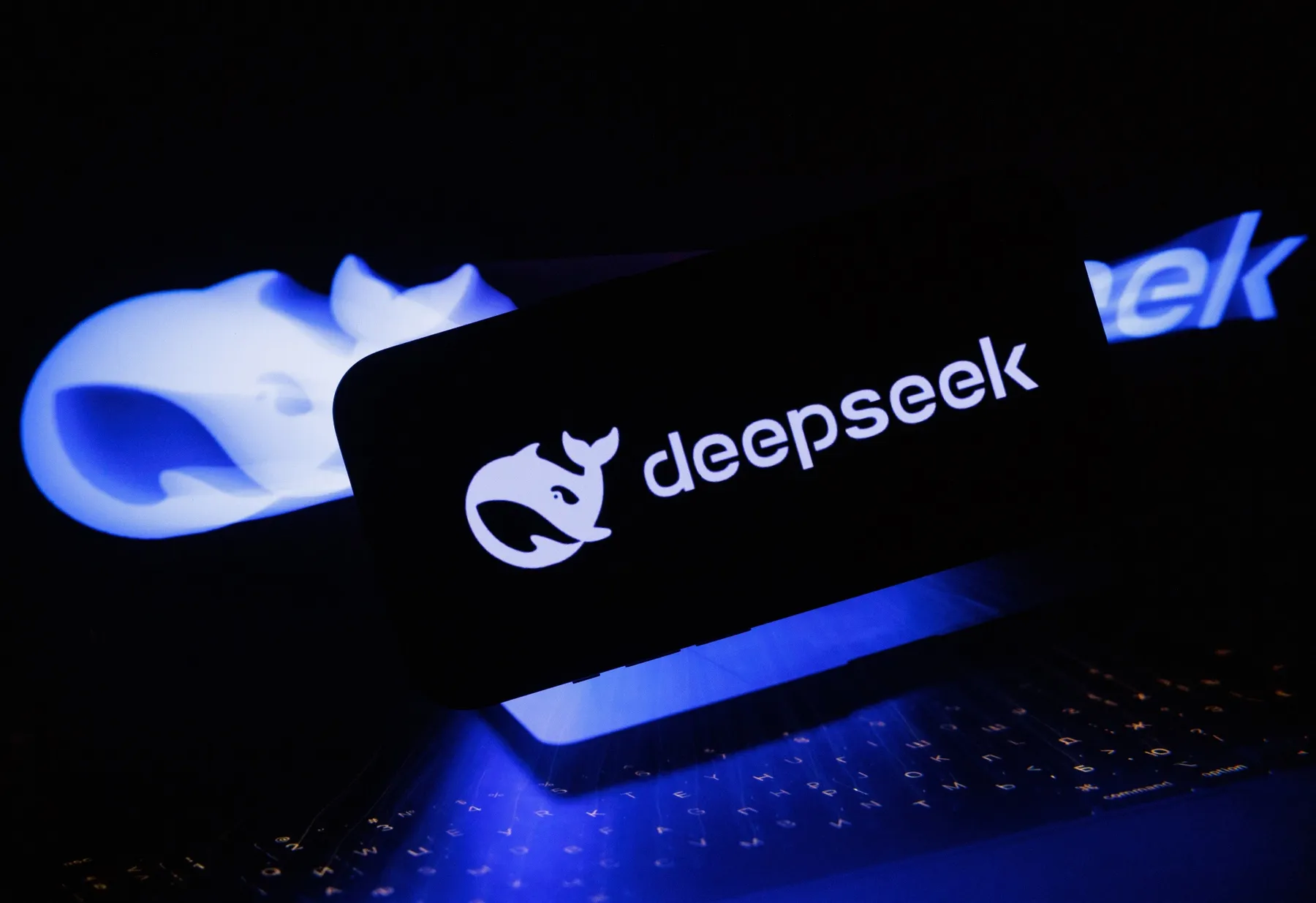DeepSeek has redefined the race for AI development, challenging the dominance of proprietary models and reshaping how artificial intelligence is built, accessed, and deployed. In a world that is preparing to use AI heavily in all its operations going forward, DeepSeek has managed to achieve what can be called the democratization of technology. By breaking down the barriers that often separate the best tools from those who need them most, DeepSeek has empowered developers, businesses, and even individual creators to harness the power of AI like never before.
When DeepSeek launched on 20 Jan 2025, it caused a riot in the markets, as the Nasdaq Composite saw a sharp 3.4% drop at market opening, largely driven by the sudden plunge in Nvidia’s stock. What followed was a massive sell-off, with Nvidia, a key player in the AI hardware space, experiencing a staggering 17% decline, resulting in a loss of approximately $600 billion in market capitalization. This has raised alarms as DeepSeek’s breakthrough technology threatens to disrupt the competitive landscape, leaving traditional players like Nvidia scrambling to adapt.
But what makes DeepSeek stand out? Beyond its accessibility, there are several qualities that set it apart from its competitors in the AI space. In this blog post, we’ll take a deep dive into DeepSeek’s strengths, the advantages it offers to various industries, and the challenges it faces as it continues to evolve. We’ll also compare DeepSeek to other leading AI models, explore its potential use cases, and discuss what the future holds for this groundbreaking technology.
What is DeepSeek?
DeepSeek is an AI development firm based in Hangzhou, China, founded in May 2023 by Liang Wenfeng, a graduate of Zhejiang University. Wenfeng, who also co-founded the quantitative hedge fund High-Flyer, operates DeepSeek under High-Flyer’s umbrella. The company’s funding and valuation have not been publicly disclosed.
DeepSeek specializes in open-source large language models (LLMs). After releasing its first model in November 2023, the company quickly iterated on its technology, culminating in the launch of the R1 reasoning model in January 2025, which brought it global attention.
Open Source – The Unique Value Proposition of DeepSeek
DeepSeek’s standout feature is its commitment to open-source accessibility. Unlike major players that keep their AI models locked behind paywalls, DeepSeek provides an alternative that encourages innovation and collaboration. This openness fosters a community-driven approach to AI development, where improvements and adaptations are freely shared, accelerating technological progress.
Another key advantage is cost-effectiveness. AI adoption has traditionally been expensive, limiting access to large corporations with deep pockets. DeepSeek changes this dynamic by offering an affordable solution without compromising performance. For businesses looking to integrate AI-driven automation, chatbots, or content generation tools, this opens up new opportunities.
Performance and efficiency also play a crucial role in DeepSeek’s appeal. With faster inference speeds and a streamlined architecture, it enables seamless AI implementation across various industries, from customer service to academic research. These attributes make it particularly attractive for startups and small businesses that may not have the resources to work with high-cost AI solutions.
The Expanding Use Cases for DeepSeek
DeepSeek’s affordability and efficiency make it a strong candidate for various applications. Businesses are increasingly using AI-driven tools for automation, customer interactions, and data analysis. Startups, often constrained by budget limitations, can benefit immensely from DeepSeek’s model. From enhancing workflow automation, building AI-powered applications, or leveraging machine learning for analytics, DeepSeek provides a practical, low-cost alternative to expensive AI models.
DeepSeek’s open-source nature invites developers to experiment and innovate, offering new opportunities for custom solutions that would otherwise be financially out of reach. This encourages a broader range of industries, especially small to mid-sized companies to integrate DeepSeek into their operations to create personalized customer experiences, optimize supply chains, and even predict market trends with far less overhead.
Challenges and Competition
Despite its advantages, DeepSeek faces significant challenges. Open-source AI models come with ethical and security concerns, as unrestricted access raises the risk of misuse. Questions surrounding AI safety, data privacy, and regulatory oversight are likely to increase as DeepSeek gains popularity.
Moreover, the pushback from industry leaders cannot be ignored. Tech giants that have invested billions into proprietary AI models may view DeepSeek as a disruption to their business models. Companies like OpenAI, Google, and Meta have already shown resistance to fully open AI ecosystems, arguing that controlled access is necessary to maintain security and prevent harmful use cases.
Industry backlash and potential regulatory constraints could pose hurdles to its widespread adoption. Increasing rivalry with Silicon Valley bigwigs might be a driving force, but is also a challenge to compete with. OpenAI and other AI companies too have begun slashing down prices which becomes a contentious stake.
The cyberattack on DeepSeek on 27th of January 2025, only days after it’s release also reinforces people’s doubts on the safety of their data in the hands of a Chinese company. All of these remain challenges DeepSeek needs to plan for.
Scalability is another critical issue. While DeepSeek’s current models are making an impact, maintaining long-term competitiveness will require continuous advancements in training data, computing power, and optimization techniques. Can DeepSeek sustain its growth without the massive financial backing that its competitors enjoy?
DeepSeek vs. The AI Giants
To fully understand DeepSeek’s role in the AI landscape, it’s essential to compare it with existing models.
OpenAI’s GPT-4 remains a benchmark for advanced language models, offering unparalleled performance but at a steep cost. DeepSeek’s affordability and open-source model make it a viable alternative, especially for developers who prioritize flexibility over proprietary enhancements.
Google’s Gemini AI operates within a tightly controlled ecosystem, optimizing performance for Google products and services. While this ensures seamless integration, it limits accessibility. DeepSeek, on the other hand, provides broader usability without vendor lock-in.
Meta’s LLaMA series is another major competitor in the open-source AI space, but DeepSeek’s superior efficiency and lower resource requirements make it an attractive option for businesses and individual developers looking for a more lightweight solution.
Within China’s AI race, DeepSeek is emerging as a leader, challenging domestic and international models alike. Its rise underscores the growing influence of open-source AI within the global tech industry.
What’s Next for DeepSeek?
If DeepSeek continues to improve efficiency and expand its training data, it could become a dominant force in AI, especially among businesses and developers looking for a customizable and affordable solution.
One possibility is that major AI players will be forced to adapt, leading to a broader shift toward open-source AI. If DeepSeek’s success continues, we may see increased pressure on proprietary models to offer more accessible pricing structures and greater transparency.
Regardless of the challenges ahead, DeepSeek has already demonstrated that AI does not have to be prohibitively expensive or restricted to a select few. It is pushing the industry toward a more open and inclusive future, one where innovation is driven by accessibility rather than exclusivity.
Conclusion
The rise of DeepSeek as a revolutionary affordable AI model is a sign of what’s to come in the AI revolution. By making artificial intelligence affordable, open-source, and efficient, it makes AI more accessible to small and medium businesses, significantly bolstering AI adoption on a widespread scale. It also challenges the status quo and paves way for healthier competion across the board, which can only lead to improvement of the technology as a whole.


